Stew’s Introduction
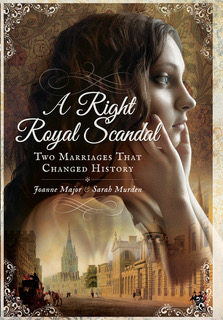
We are extremely fortunate to have Sarah Murden and Joanne Major grace (no pun intended) our site today with their guest blog. Sarah and Joanne are the co-authors of an extremely fascinating biography of the infamous courtesan, spy, and survivor of the French Revolution, Grace Dalrymple Elliott. They are meticulous with their research, especially with a subject that did not leave a whole lot behind for historians. Sarah and Joanne live in the UK and consider themselves “history detectives” who write/blog about all things having to do with the Georgian and early Victorian Eras. Their new book A Right Royal Scandal picks up where Grace leaves off with the reader’s entrance into the beginning of the Victorian Era. You can visit with Sarah and Jo on their web site https://georgianera.wordpress.com as well as purchase their books on www.Amazon.com.
Research Background
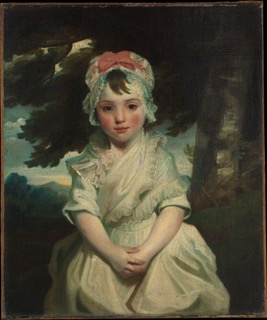
Being able to add so much information to Grace Dalrymple Elliott’s story was something of a happy accident. We were researching the Reverend Charles Cavendish Bentinck (ancestor of the British royal family) and his wife Sinnetta Lambourne who had gypsy blood (they are the subjects of our book A Right Royal Scandal: Two Marriages That Changed History).
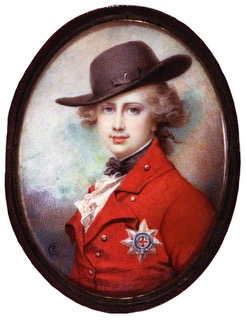
The Rev. Cavendish Bentinck’s father had been married twice and his first wife was Georgiana Seymour, Grace’s daughter. Reputedly, the Prince of Wales was Georgiana’s father.
Meet Grace and Her Family
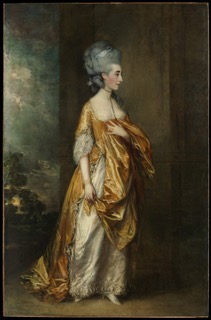
Grace Dalrymple Elliott was an infamous eighteenth-century courtesan. Married young to Dr. (later Sir) John Eliot, a messy and public divorce and criminal conversation trial ensued when Grace was discovered in a bagnio with the worthless Viscount Valentia. An earl, a prince and a French duke became, in turn, the lovers of the beautiful Grace and she picked her protectors wisely.
We’re always easily side-tracked and Grace – and her wider family – swiftly took over our research. While we can’t definitively say that the Prince of Wales (the future George IV) was Georgiana’s father, we discovered letters between Queen Charlotte and her eldest son which proved conclusively that they both believed the girl to have blue blood.
Unlocking Grace’s maternal family was the key to revealing her life though. Grace’s niece, Frances, Lady Shelley claimed that the Earl of Peterborough was her mother’s first cousin, and so he was. Robinaiana, Countess of Peterborough was the mother of the 5th Earl of Peterborough and also Grace’s maternal aunt.
Robinaiana Brown had been the 4th Earl of Peterborough’s mistress for many years, bearing him several illegitimate children. When the earl’s wife died he married Robinaiana with almost indecent haste; she was pregnant once again and he had no legitimate male heir. It sheds an interesting light on Grace’s own love affair with the handsome Earl of Cholmondeley; in view of her aunt’s ascendance to the peerage after a similar career as a courtesan, Grace probably was actually expecting a marriage proposal from her own besotted peer. Unfortunately for Grace, the prudent earl thought with his head and not with his heart and was determined that his wife would be an heiress. Grace was not destined to wear a countess’ coronet.
Robinaiana led us to her sister Janet Brown who was also the mistress of an aristocratic gentleman for many years before he married her almost upon his deathbed. She inherited the bulk of her husband’s fortune to the chagrin of his brother who thought her a gold-digger. Two more husbands followed – one something of a toy-boy – and Janet outlived them all and ended her life a wealthy widow. She almost snared a fourth husband in her dotage, a rickety old lord who went down on one knee to propose and got stuck there (the servants had to haul him to his feet!) but his death prevented the union. It was at Janet’s Twickenham home in the early 1800s that Grace penned her memoir, Journal of my life during the French Revolution.
Searching the Dusty Archives
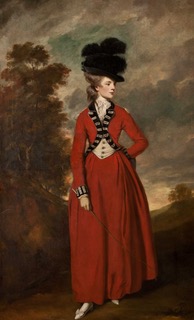
We traced new documents languishing in dusty archives and have been able to shed new light on Grace in her middle age when she was no longer a fixture in the newspaper gossip columns. One of our favourite sightings from this period has to be the tall, willowy and still strikingly attractive Grace, all powder, rouge and lace, squeezing her rotund Aunt Janet into her carriage for a visit to the theatre. Grace’s two boon companions in her later life were the equally scandalous Lady Worsley and a woman who had formerly been her Aunt Janet’s scullery maid. It’s such a totally different and new view of Grace to that traditionally held.
In her Journal Grace mentioned a brother but no-one had found any evidence that he existed, until now. Grace actually had two brothers but it was Henry Hew Dalrymple, her eldest brother, who we found most interesting. He had inherited a plantation on the island of Grenada from his father complete with resident slaves and was repulsed by what he witnessed. This led to him campaigning alongside William Wilberforce and the Clapham Sect for the abolition of slavery and he also led a boys own adventure of an expedition to colonise a remote African island with the noble intention that freed slaves could settle on it and build a new life for themselves. Sadly, the expedition turned out to be well-intentioned rather than well-planned and ended in disaster.
Training to be a Courtesan
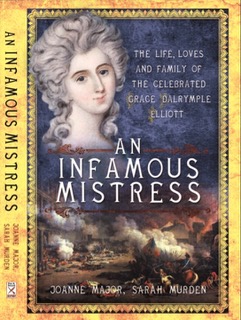
But what of Grace herself? We firmly believe that she can only be truly understood when you place her in the context of her wider family. When you realise that two of her aunts made their fortunes by being mistresses you begin to better understand Grace’s own decision to live her life as a courtesan. The determination and bravery of Grace’s brother helps us to understand Grace’s own courage in the face of adversity and her talent for keeping her head above water no matter what life threw in her path. So many other courtesans ended their lives in penury once their glory days had faded but Grace clung on to the skirt tails of polite society until almost the end. It was a life well lived but one that ended somewhat sadly when she died alone in Ville d’Avray near Paris, her finances finally depleted.
All this and much, much more is revealed in our biography, An Infamous Mistress: the Life, Loves and Family of the Celebrated Grace Dalrymple Elliott, available now in hardback, ebook and kindle formats.


Good story Thanks I need to read the book